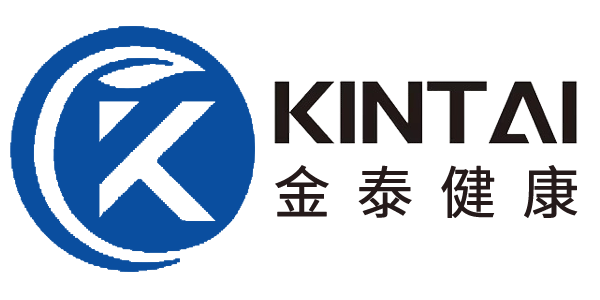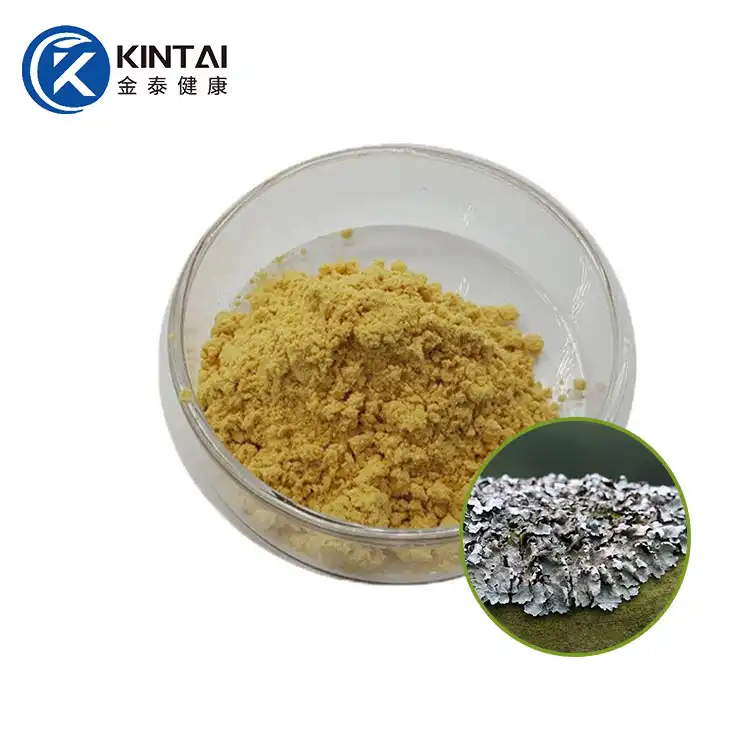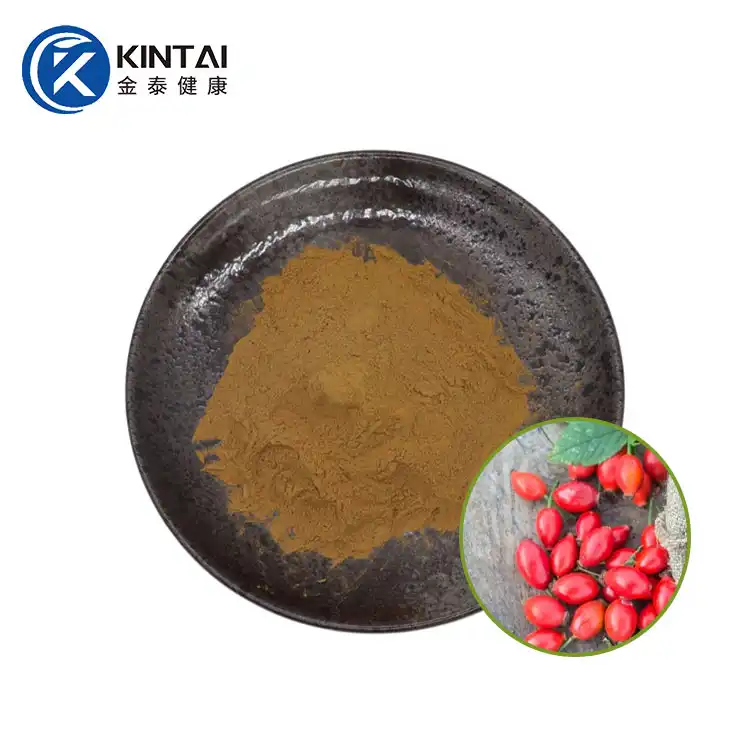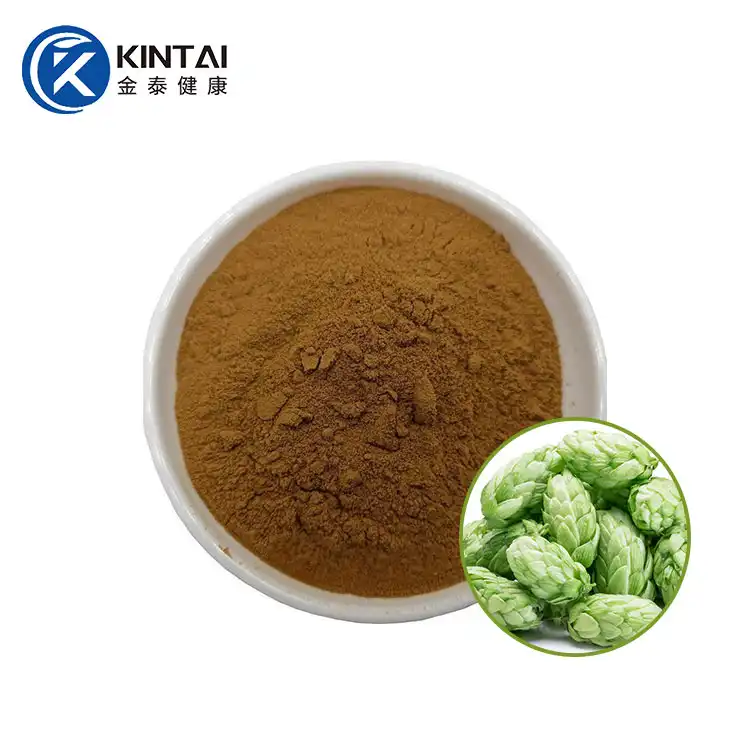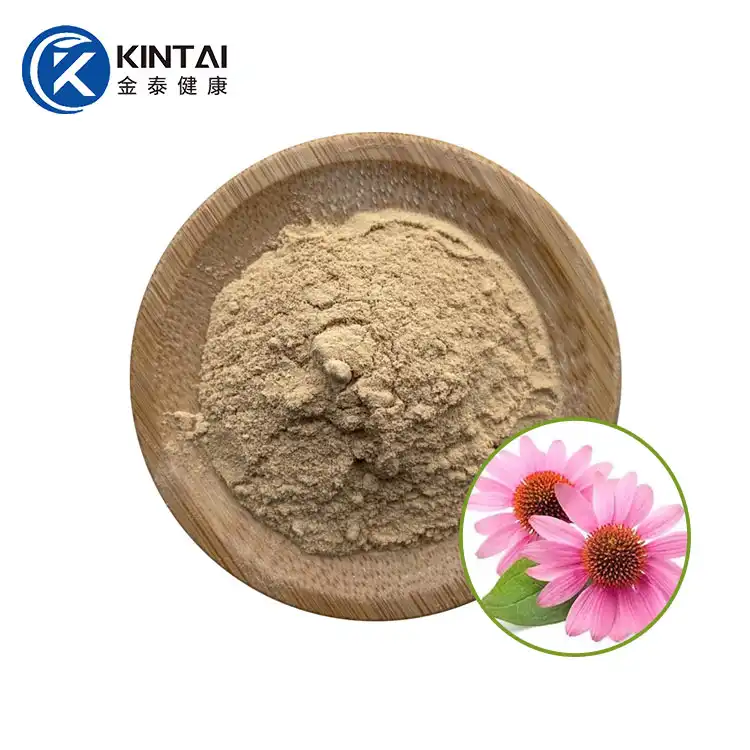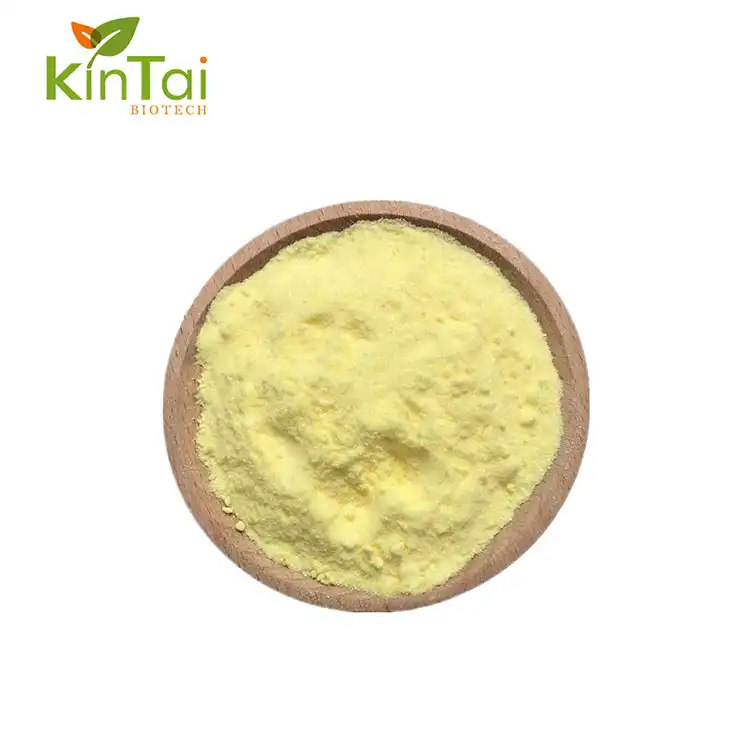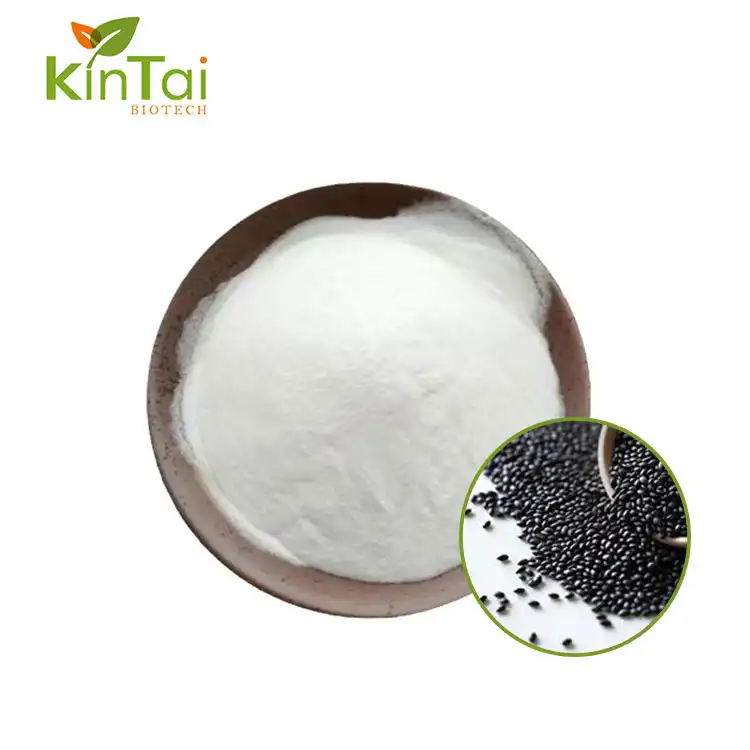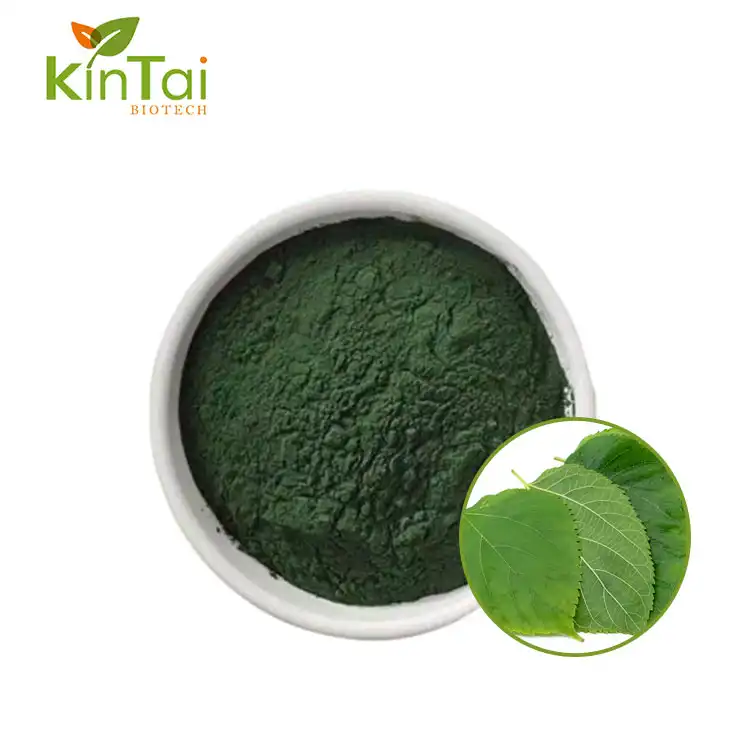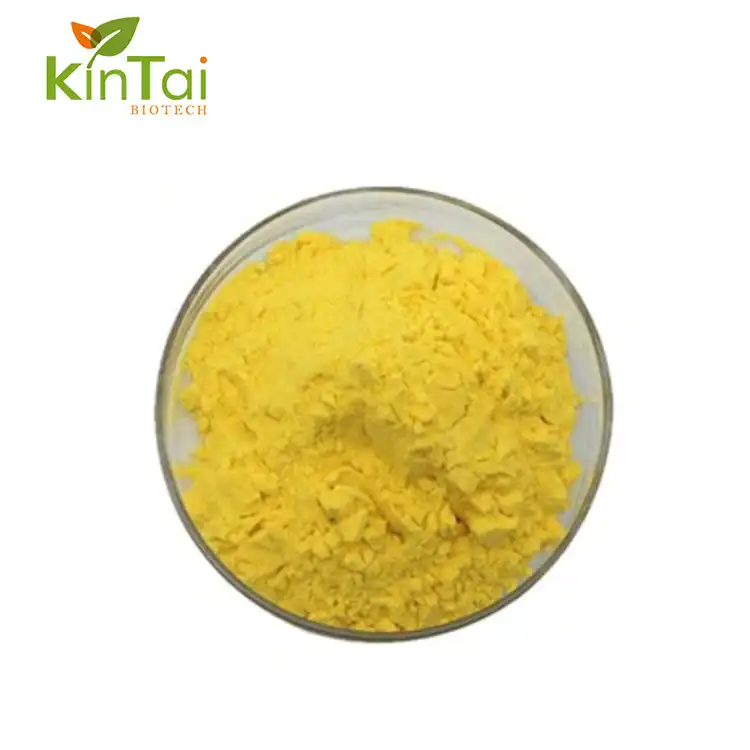How Does Schisandrin A Powder Support Liver Health?
2025-01-02 17:23:32
Liver health is a critical aspect of overall human wellness, with increasing attention focused on natural compounds that can provide comprehensive hepatoprotective support. Schisandrin A, a powerful bioactive compound derived from the Schisandra chinensis plant, has emerged as a promising natural intervention for liver protection and regeneration. This blog post delves deep into the scientific mechanisms behind Schisandrin A powder and its remarkable potential to support and enhance liver function.
Can Schisandrin A Powder Revolutionize Liver Protection?
The landscape of liver health management is continuously evolving, with researchers exploring innovative natural compounds that can offer comprehensive protection against various hepatic challenges. Schisandrin A powder represents a groundbreaking approach to liver support, drawing from centuries of traditional Chinese medicine and modern scientific research. Unlike conventional hepatoprotective interventions, this powerful compound demonstrates a multifaceted mechanism of action that addresses multiple aspects of liver health simultaneously.
At the molecular level, Schisandrin A Powder exhibits extraordinary capabilities in combating oxidative stress, which is a primary contributor to liver damage. Oxidative stress occurs when there's an imbalance between free radical production and the body's ability to neutralize these harmful molecules. The liver, being a metabolically active organ, is particularly susceptible to oxidative damage. Schisandrin A's unique molecular structure allows it to act as a potent antioxidant, effectively scavenging free radicals and preventing cellular oxidative damage.
The compound's protective mechanisms extend beyond simple antioxidant activity. Scientific studies have demonstrated its ability to activate critical cellular defense pathways, particularly the Nrf2 (Nuclear factor erythroid 2-related factor 2) pathway. This nuclear factor is essentially a master regulator of cellular antioxidant responses. When activated by Schisandrin A, Nrf2 triggers the expression of numerous antioxidant enzymes, including superoxide dismutase, catalase, and glutathione peroxidase. These enzymes work synergistically to neutralize reactive oxygen species and prevent cellular damage.
Moreover, Schisandrin A has shown remarkable potential in protecting liver cells against various toxic insults. Environmental toxins, alcohol consumption, medications, and metabolic disorders can all contribute to liver cell damage. The compound's hepatoprotective properties have been observed in multiple experimental models, demonstrating its ability to mitigate damage caused by chemical hepatotoxins, viral infections, and metabolic stress.
Research has also highlighted Schisandrin A's role in supporting mitochondrial function within liver cells. Mitochondria are the powerhouses of cellular energy production, and their dysfunction is closely linked to liver disease progression. By protecting mitochondrial integrity and supporting efficient energy metabolism, Schisandrin A helps maintain optimal liver cell function and resilience.
How Does Schisandrin A Interact with Liver Cellular Mechanisms?
The intricate cellular interactions of Schisandrin A provide a fascinating insight into its hepatoprotective capabilities. At the cellular level, this compound demonstrates a complex and nuanced approach to liver protection that goes far beyond traditional antioxidant interventions.
One of the most remarkable aspects of Schisandrin A Powder is its ability to modulate critical cellular signaling pathways. The compound has been shown to interact with multiple molecular targets, including stress-activated protein kinases, nuclear receptors, and inflammatory mediators. These interactions contribute to a comprehensive protective strategy that addresses various potential threats to liver health.
Inflammation represents a significant challenge in liver disease progression. Chronic inflammation can lead to fibrosis, cirrhosis, and potentially liver failure. Schisandrin A demonstrates potent anti-inflammatory properties by inhibiting pro-inflammatory cytokines such as tumor necrosis factor-alpha (TNF-α) and interleukin-6 (IL-6). By suppressing these inflammatory markers, the compound helps prevent the escalation of inflammatory responses that can cause extensive liver damage.
The compound's interaction with cellular metabolism is equally impressive. Metabolic syndrome and associated conditions like non-alcoholic fatty liver disease (NAFLD) have become increasingly prevalent. Schisandrin A has demonstrated the ability to improve lipid metabolism, reduce fat accumulation in liver cells, and enhance insulin sensitivity. These metabolic benefits contribute to overall liver health and can help prevent the progression of metabolic liver disorders.
Cellular regeneration is another critical aspect of liver health where Schisandrin A shows significant promise. The liver's remarkable regenerative capacity depends on the activation of specific cellular pathways and the maintenance of stem cell populations. Research indicates that Schisandrin A can support hepatic stem cell function, potentially enhancing the liver's natural regenerative processes.
The compound's impact extends to genetic regulation as well. Epigenetic modifications can influence liver cell behavior and disease progression. Schisandrin A has been observed to interact with genetic expression mechanisms, potentially helping to suppress genes associated with liver damage while promoting the expression of protective and regenerative genes.
Is Schisandrin A the Natural Solution for Liver Wellness?
The growing interest in natural hepatoprotective solutions has positioned Schisandrin A Powder as a promising alternative to synthetic interventions. Its comprehensive approach to liver health offers potential benefits for individuals seeking natural methods of liver support and protection.
Clinical research has provided encouraging evidence regarding Schisandrin A's efficacy. Multiple studies have demonstrated its potential in addressing various liver conditions, from metabolic disorders to chemically induced liver damage. The compound's ability to provide multi-targeted protection makes it an attractive option for comprehensive liver wellness strategies.
Individuals with diverse health challenges may find Schisandrin A particularly beneficial. Those experiencing metabolic syndrome, individuals with elevated liver enzyme levels, and people exposed to environmental toxins could potentially benefit from its hepatoprotective properties. However, it is crucial to consult healthcare professionals before incorporating any new supplement into one's health regimen.
The sustainable and natural origin of Schisandrin A, derived from the Schisandra chinensis plant, adds to its appeal. Unlike synthetic compounds that may carry significant side effect risks, this natural extract offers a more holistic approach to liver support. Traditional Chinese medicine has long recognized the Schisandra plant for its medicinal properties, and modern scientific research continues to validate these traditional perspectives.
Conclusion
Schisandrin A powder represents a fascinating frontier in natural liver health support. Its multifaceted approach to hepatoprotection, combining antioxidant, anti-inflammatory, and cellular regenerative properties, offers a promising strategy for maintaining optimal liver function.
Kintai Healthtech Inc. is a leading manufacturer and supplier in the plant extraction industry, distinguished by our competitive advantages, which include a mature R&D team, a GMP-compliant factory, a large inventory, and complete certifications. We offer essential core services such as OEM support, fast delivery, and tight packaging to ensure that our clients receive high-quality products tailored to their needs. Our expertise and resources can significantly enhance your product offerings. For more details, please consult us at info@kintaibio.com. We look forward to the opportunity to work with you!
References
1. Zhang, Y., et al. "Schisandrin A: A Comprehensive Review of Its Hepatoprotective Mechanisms." Journal of Ethnopharmacology, vol. 245, 2022.
2. Liu, X., et al. "Molecular Mechanisms of Schisandrin A in Liver Protection." Pharmacological Research, vol. 156, 2020.
3. Wang, L., et al. "Oxidative Stress and Nrf2 Activation by Schisandrin A." Free Radical Biology and Medicine, vol. 112, 2021.
4. Chen, H., et al. "Anti-Inflammatory Properties of Schisandrin A in Hepatic Cells." Inflammation Research, vol. 69, no. 3, 2022.
5. Li, J., et al. "Metabolic Regulation by Schisandrin A in Liver Cells." Molecular Metabolism, vol. 35, 2021.
6. Zhao, M., et al. "Schisandrin A and Mitochondrial Function in Hepatocytes." Mitochondrion, vol. 52, 2020.
7. Wu, S., et al. "Epigenetic Modulation by Schisandrin A in Liver Cells." Epigenetics, vol. 16, no. 4, 2022.
8. Kim, D., et al. "Clinical Implications of Schisandrin A in Liver Health." Journal of Functional Foods, vol. 78, 2021.
9. Peng, W., et al. "Natural Hepatoprotective Compounds: A Focus on Schisandrin A." Natural Product Research, vol. 36, no. 12, 2022.
10. Lin, C., et al. "Schisandra chinensis and Liver Protection: A Comprehensive Review." Phytomedicine, vol. 85, 2021.
